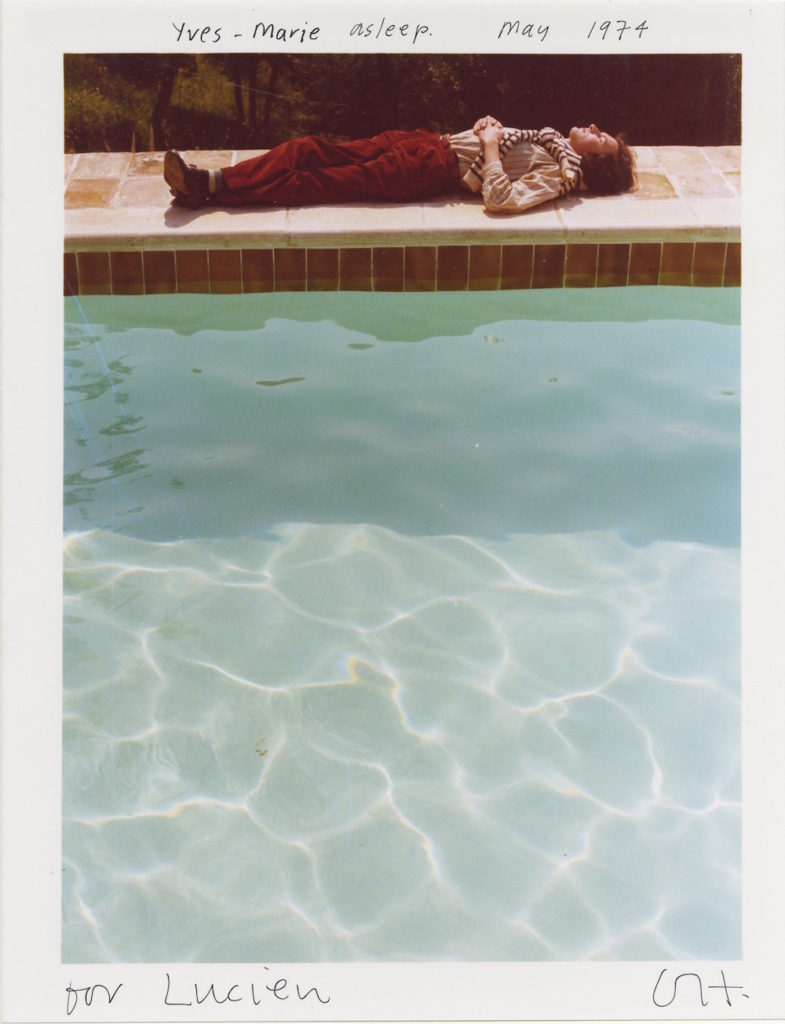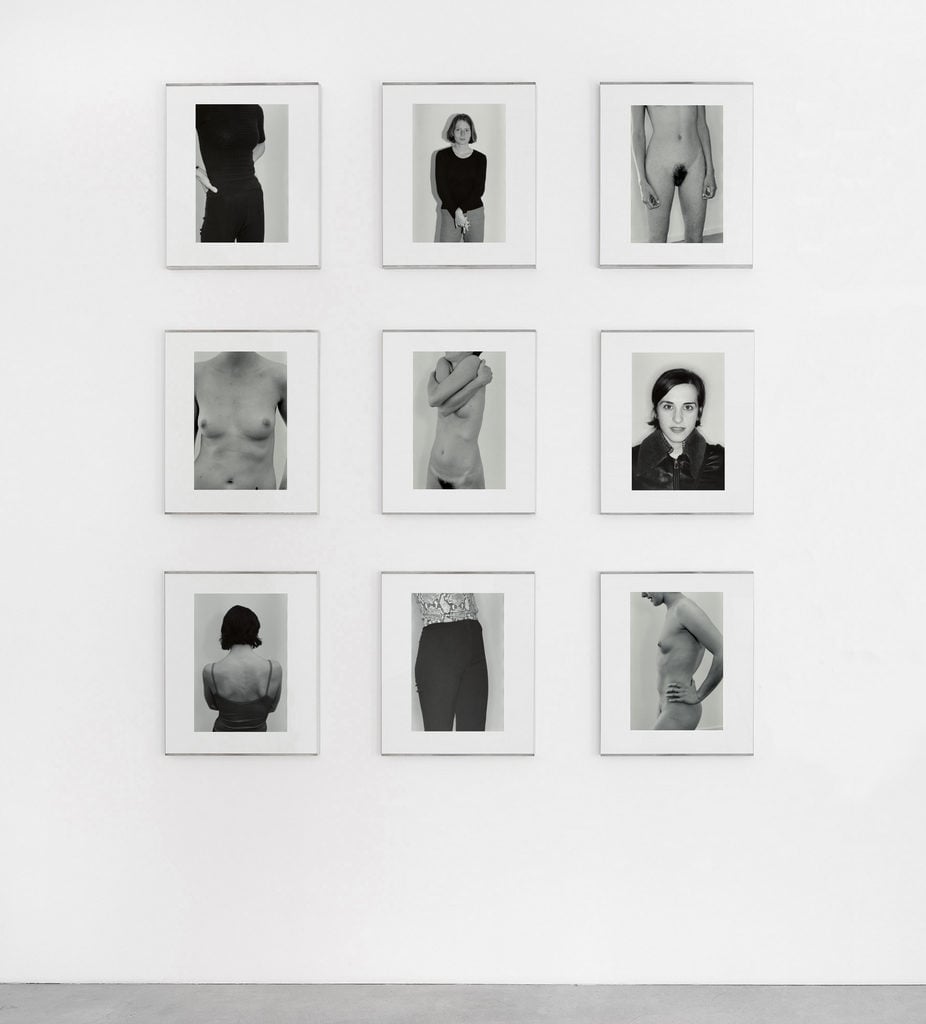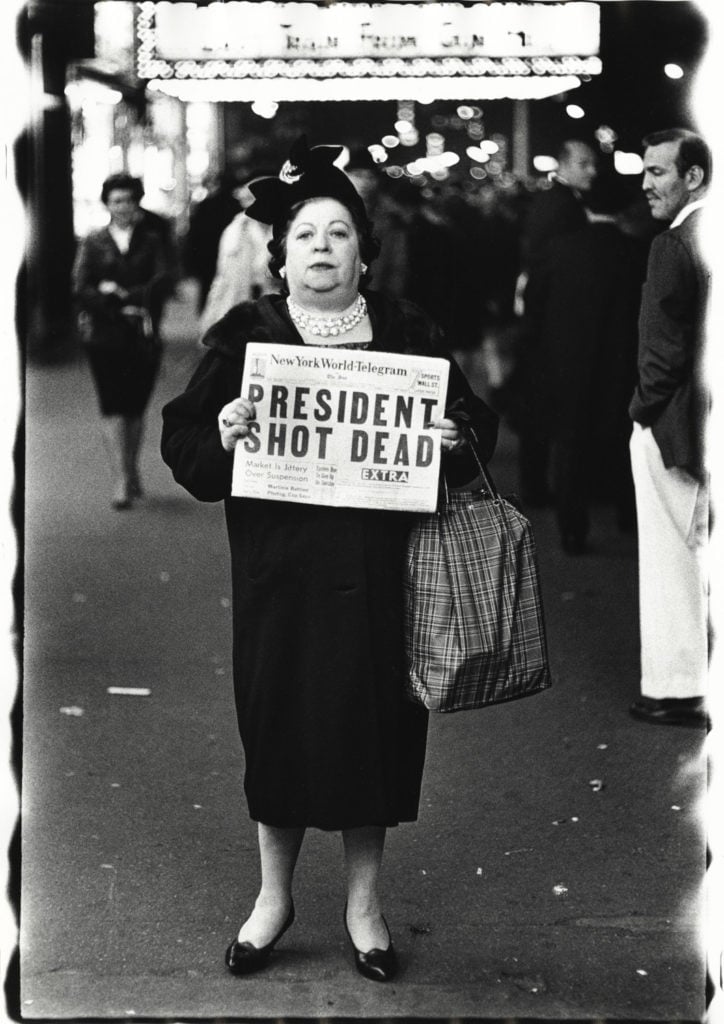Art Fairs
Paris Photo 2016 Stages Triumphant Fair After Last Year’s Cancellation
A rare series by David Hockney sold out within hours.

A rare series by David Hockney sold out within hours.

Sarah Hyde

Business was good at the Paris Photo fair despite the shock of the US presidential election results on November 8th, which threatened to overshadow the festivity of the fair’s 20th anniversary edition.
Paris Photo is the most important event in the photography calendar, drawing collectors, dealers, and curators from around the world. After last year’s closure in the aftermath of the Paris terror attacks, 153 galleries and 30 booksellers from over 30 different countries have come together to create this year’s edition. For a weekend, the city becomes the capital of photography, and is bustling with events, exhibitions, and auctions.
Tim Jeffries of Hamiltons Gallery, London, was “thrilled with how good the fair looked and how much effort the exhibitors had made this year.” Frish Brant from Fraenkel Gallery, San Fransisco, felt that the fair had “come a long way this year” and was also delighted with how good it looked.
This event is hugely influential as it’s attended not just by the art trade and collectors but also by curators, institutions, and patrons who see this as a vital point of inspiration; increasingly, it’s a place to spot trends.
As Claudia Sorhage of Galerie Nordenhake explained, “Its a place to reach out to institutions and curators, and influencers.” The gallery’s decision to show a solo booth of works by Michael Schmidt was a concerted effort to bring this artist, who is well known in Germany, to the attention of the world of photography.

Michael Schmidt, Untitled (from Frauen) (1997-1999). Photo ©Stiftung für Fotografie und Medienkunst mit Archiv Michael Schmidt; Courtesy Galerie Nordenhake Berlin/Stockholm.
This year there is certainly a a dialogue between the photographs throughout the fair concerning the representation of the human body and the nude. Works vary from traditional, idealized images of women, to surrealistic works, and raw images of the human form in a more natural state, like in Schmidt’s photography and Galerie Vu’s showing of the series “Gender Bender” by Laerke Posselt.
Works by Richard Learoyd appear at both Pace MacGill and Fraenkel. Learoyd’s special technique of printing directly onto treated paper creates an image that is remarkable in its corpulent presence. Sophie Scheidecker had also dedicated the interior of her booth to the nude, and at Galerie Lelong, Jean-Baptiste Huynh’s Nu 96, which is sized 120 x 160 cm, dominates the stand.
Meanwhile, Pace MacGill were also very happy with the opening night, having made significant sales including Richard Alvedon, Chuck Close, and Richard Misrach.

Wiiliam Eggelston, Untitled, (1976). ©Eggleston Artistic Trust, Courtesy ROSEGALLERY
For others, this year’s most interesting aspect is the new interpretation of vintage works and how much printing has improved and changed: Ink jet prints are now producing work of a comparable quality with those produced in a laboratory and the new process allows for much larger formats, and new editions of vintage works are controversially commanding impressive prices. Rose Gallery is selling William Eggleston’s series “Election Eve” with a price tag of €191,000. The edition was produced and sold in 2011.
Other curious technical works include Sally Mann at Karsten gallery who is combining the old-fashioned technology of wet plates with ink jet printing. Michael Hoppen gallery is selling Manuel Franquelo, an artist who prints his work on gesso-coated aluminum. Franquelo is one of the few contemporary artist’s at the fair who has successfully crossed over to photography, and the gallery is reportedly “pleased with the sales.”
Paris Photo has evolved to reflect the changes in the photography market over the last 20 years and the professional white booths are a long way away from the origins of the fair when dealers were trading photographs out of cardboard boxes.
Having become much more similar to other art fairs, some familiar contemporary art galleries now attend. This is certainly true of Gagosian, who sees the fair as a way to reach out to new clients. As the gallery’s director Kara Vander Weg explained “it’s about the integral artistic quality of the work. Many of the works have a relationship outside of photography but are all firmly based in the photographic genre.” This year, the gallery is showing some of the medium’s most influential names, like Peter Lindberg, Cindy Sherman, Dennis Hopper, Jeff Wall, Taryn Simon, and Cy Twombly, among others. At the time of speaking to artnet News, they had a few sales under $20,000, although the majority of works were considerably more expensive.

Richard Avedon, Kennedy Assassination, Times Square, New York City (November 22, 1963). ©The Richard Avedon Foundation, courtesy of Pace and Pace/MacGill Gallery, New York.
Vallois, a contemporary gallery from Paris, is a first time exhibitor this year and showing works by Alain Bublex. This artist manipulates photographic images, often placing Mount Fuji in curious contexts. When asked if selling this kind of work was successful in the context of Paris Photo, they were cautious, replying that so far they had sold one but were hoping for more sales. They would have to see but it would certainly not change the kind of works they brought to the fair, they added.
Interestingly, Fraenkel and Hamiltons, two of the most established photography galleries, both made gestures towards the wider art market, with Fraenkel selling a Joseph Beuys edition.
Speaking to Howard Greenberg, a veteran of the fair and one of the world’s leading vintage photography dealers, on whether or not selling such artworks at the fair had an impact on his business his answer was clear. “The only real problem with these works is their size,” he said. “Some of my collectors have run out of wall space, but I think that on the whole there is room for everyone, some people like these kinds of works and some people are serious collectors of photography.”
He also commented that “the fair had been very kind” to him as exhibitor and the gallery had a lot of good clients in Paris, but noted that the market was “a little slow at the moment.”

David Hockney, Yves-Marie Asleep (1974). Courtesy Galerie 1900-2000.
One notable runaway success at the fair has been at Galerie 1900-2000, a first-time attendee, with a series of 20 David Hockney photographs. Fresh to the market, these works were sold out within moments of the fair opening. It’s a series that made up the artist proofs—produced between 1970-1975 and printed by Sonnabend Gallery in New York in 1976, each photograph is inscribes to Lucien, the assistant of Man Ray and later, Hockney.
All twenty have been sold for between €3000-5000. David Fleiss, director of 1900-2000, came into photography and surrealistic art because his father was Man Ray’s last dealer. He normally attends art fairs, but chose to bring these to a photo fair, saying “after a great Fiac, there was no better place than Paris photo to show these pictures.”